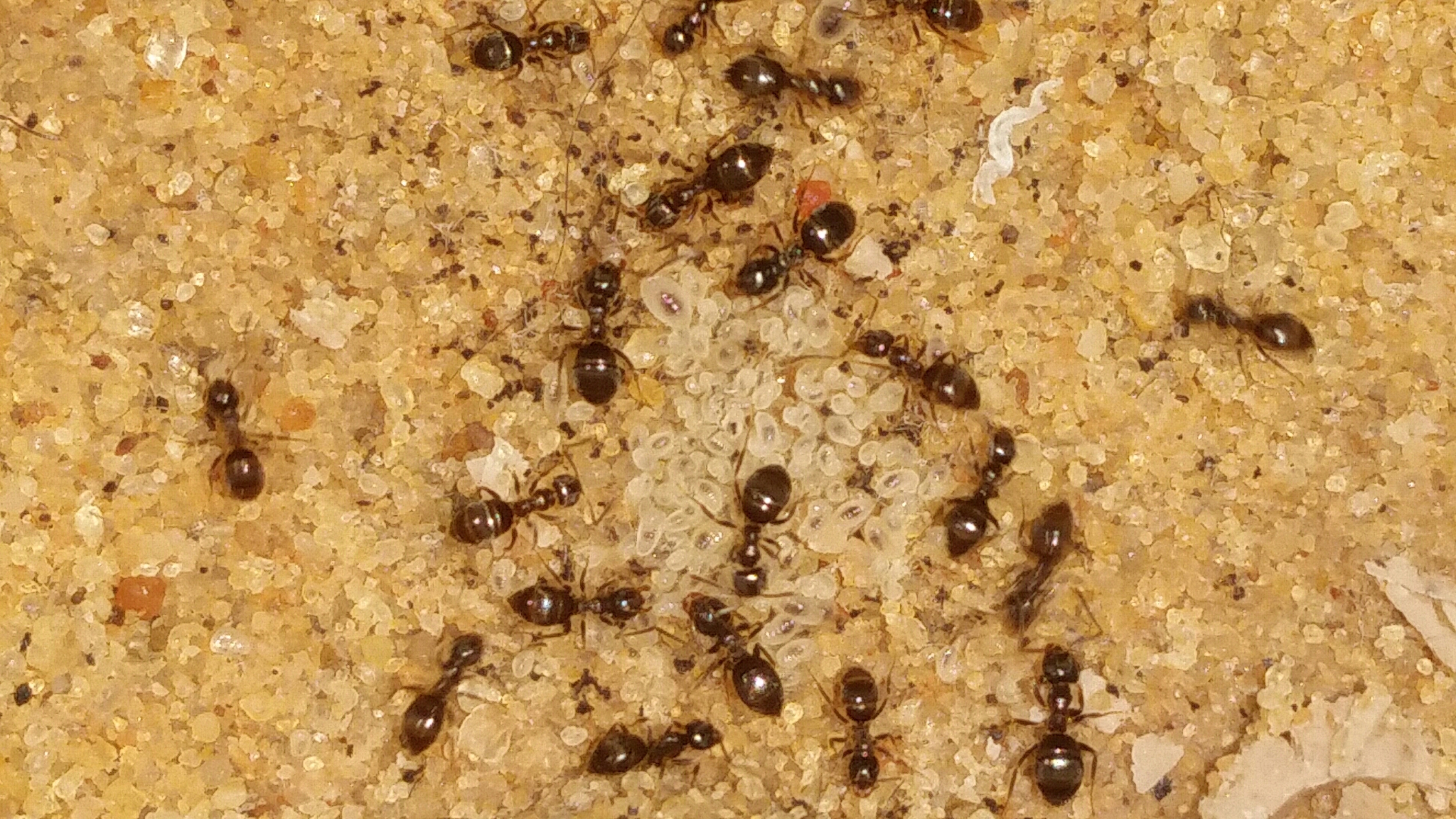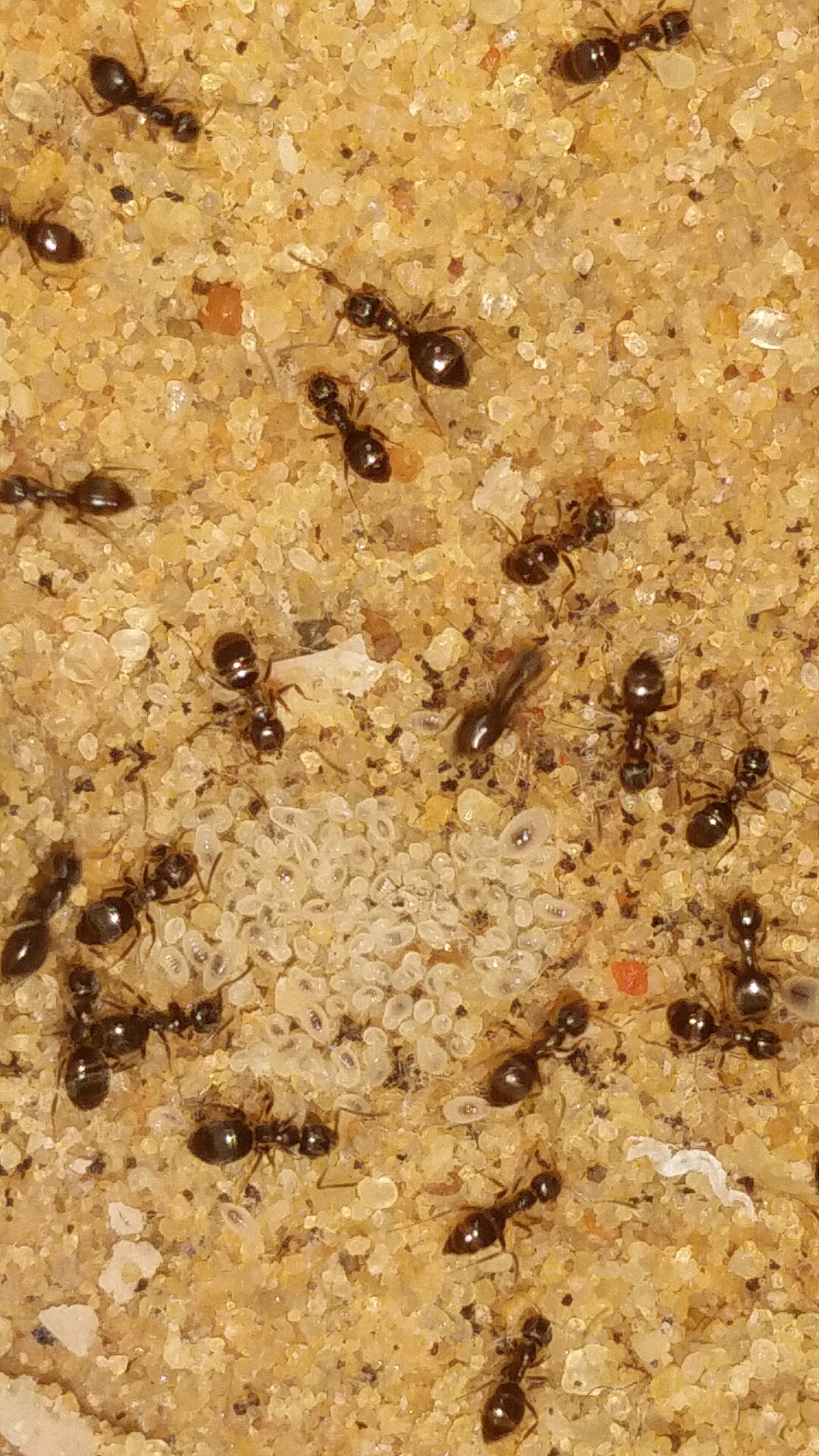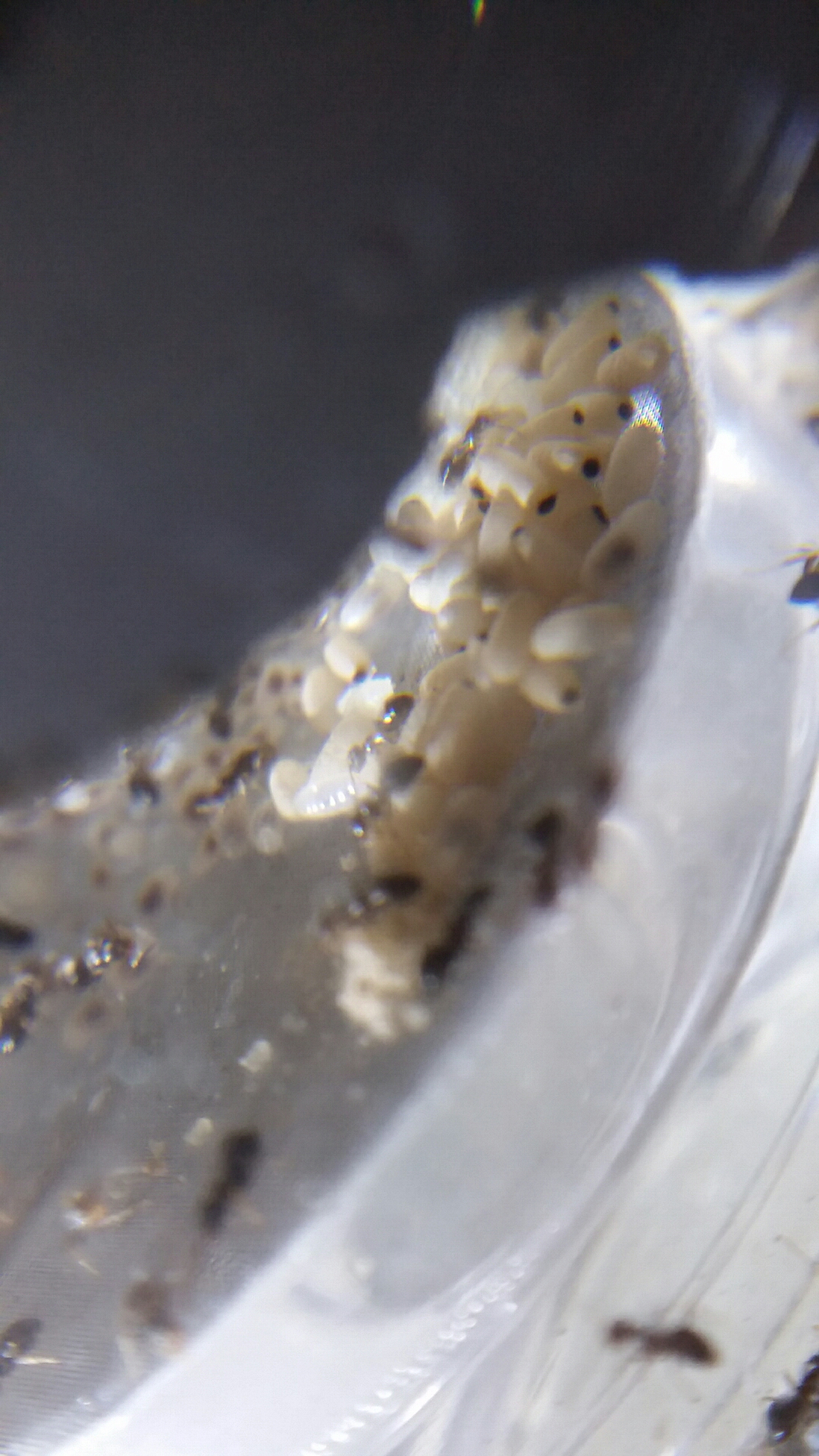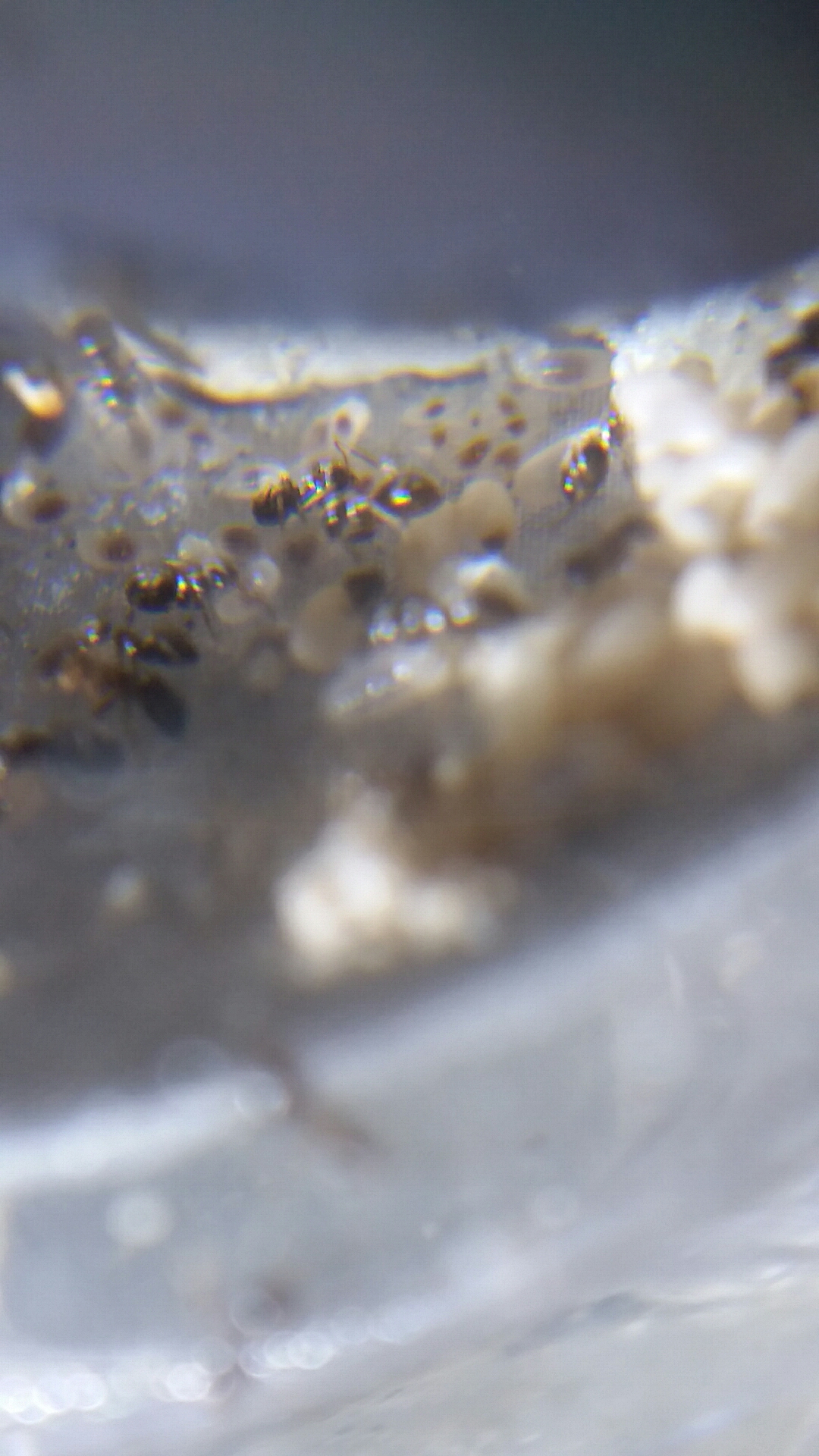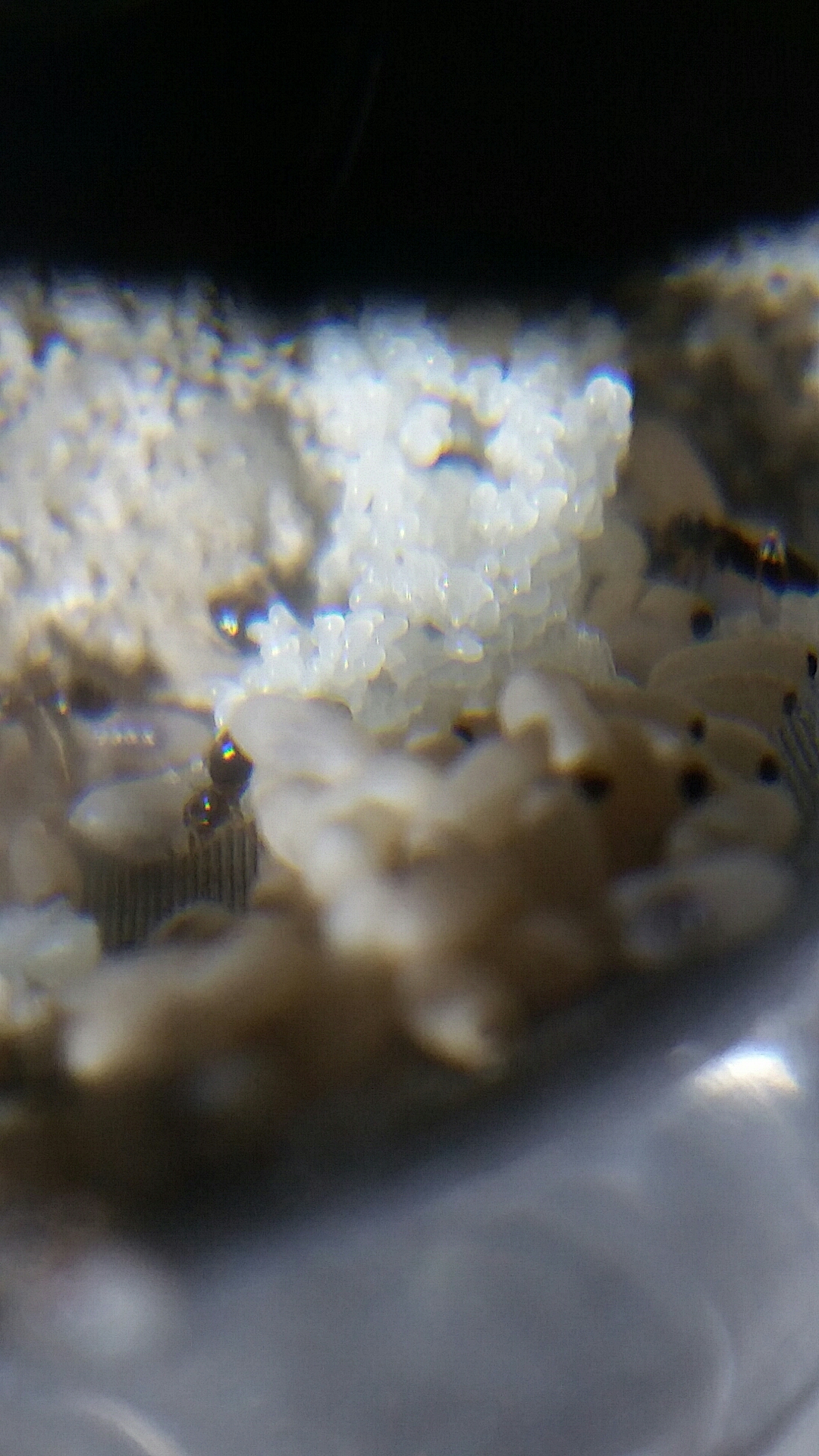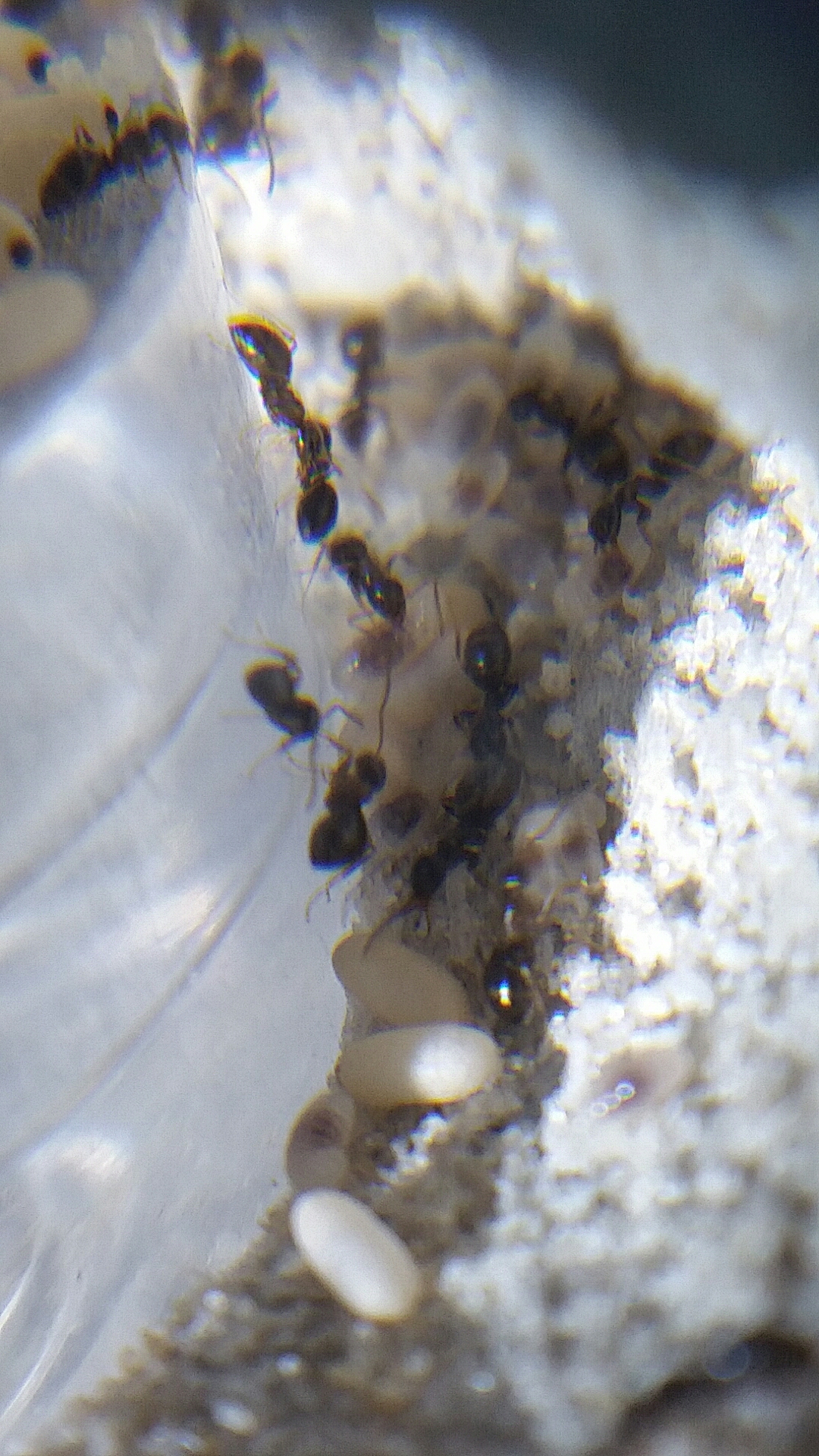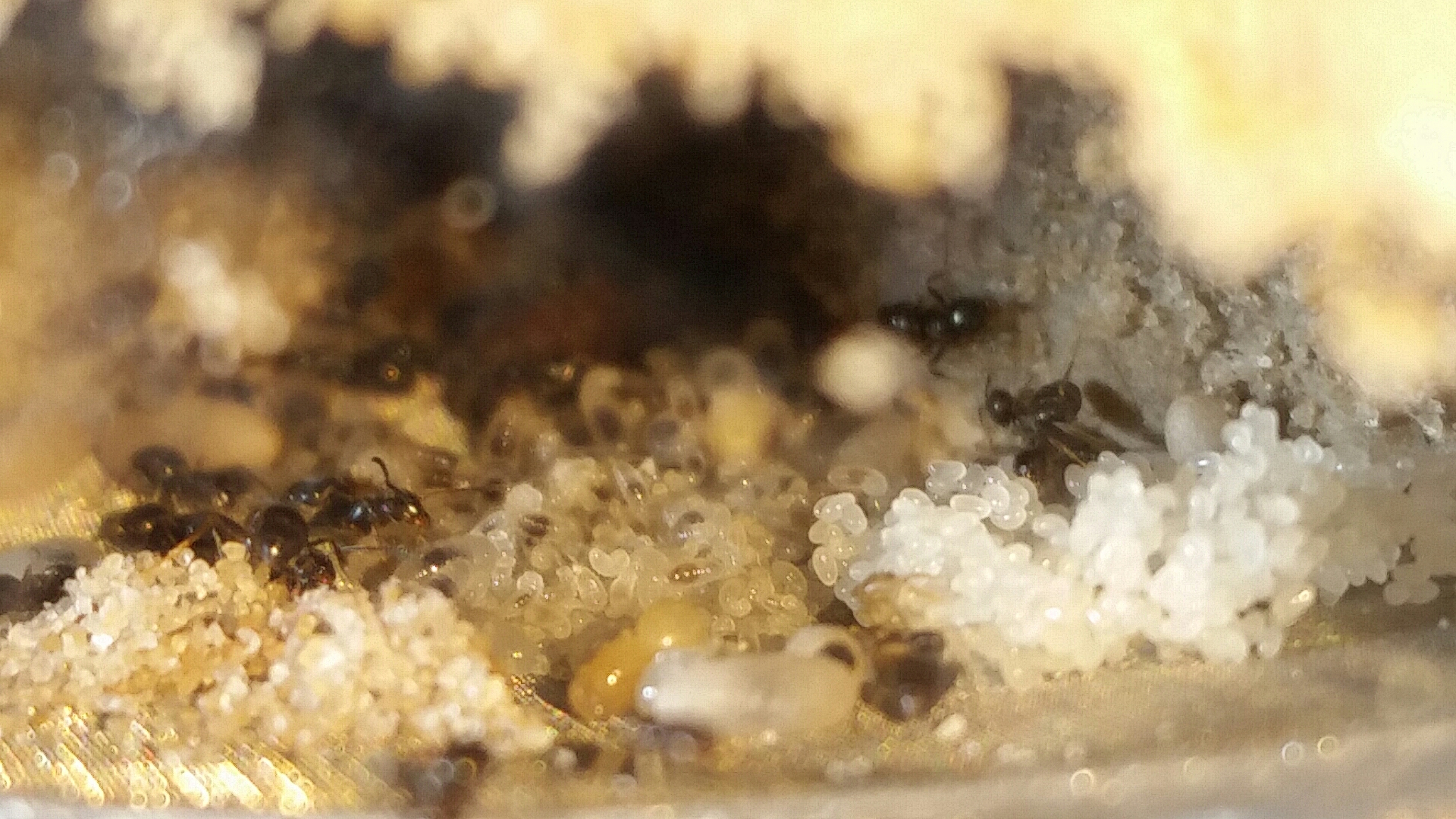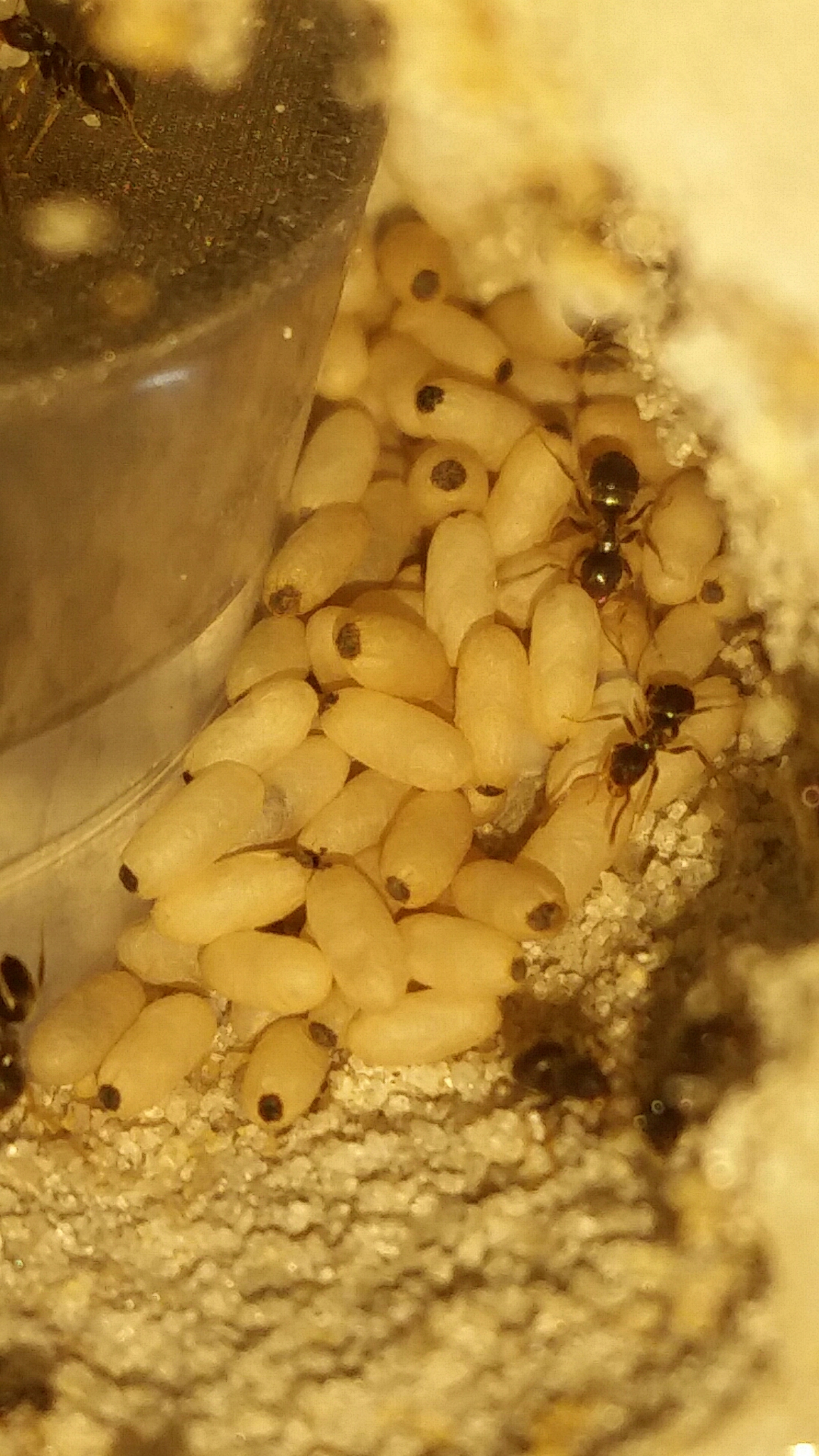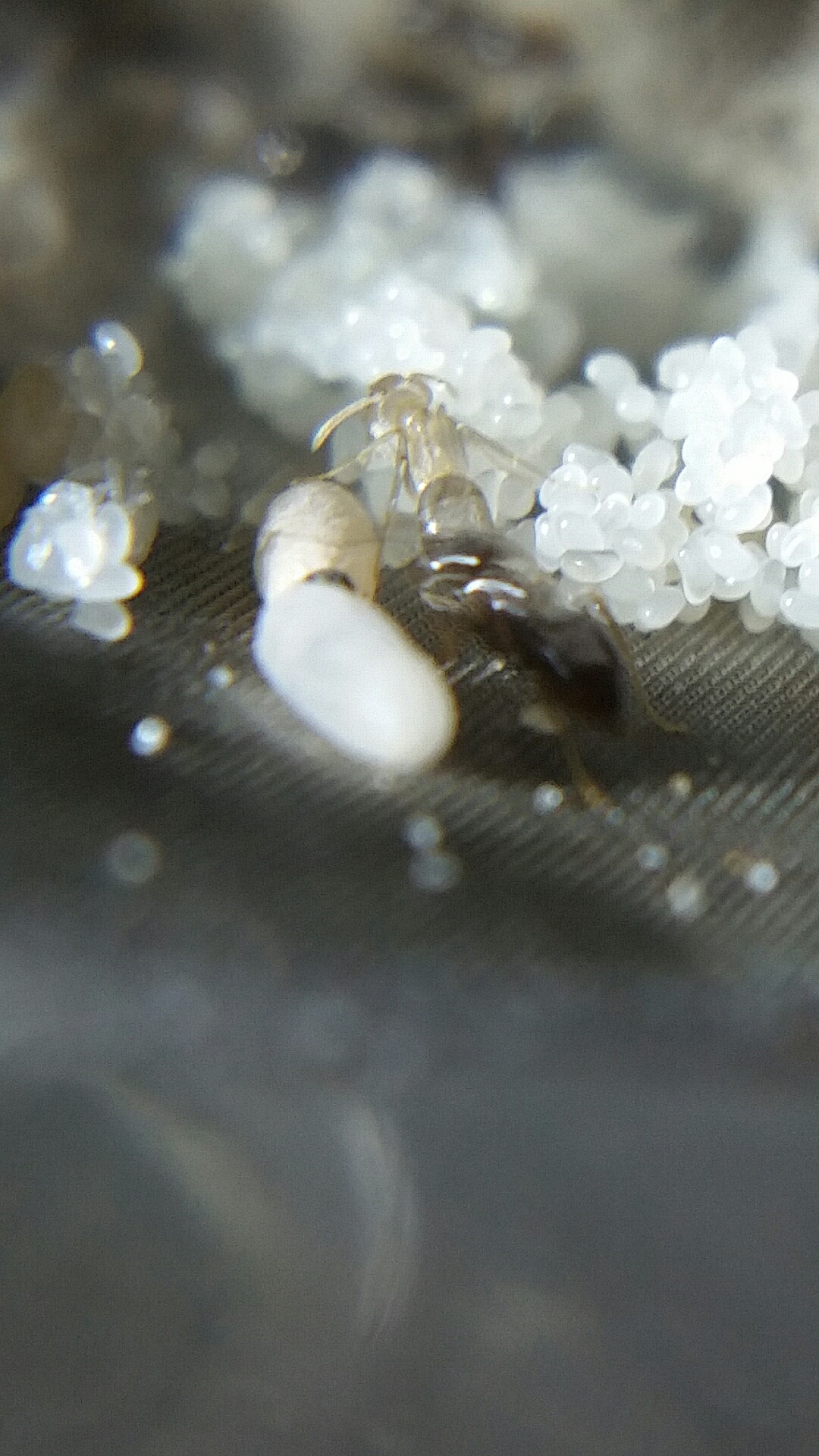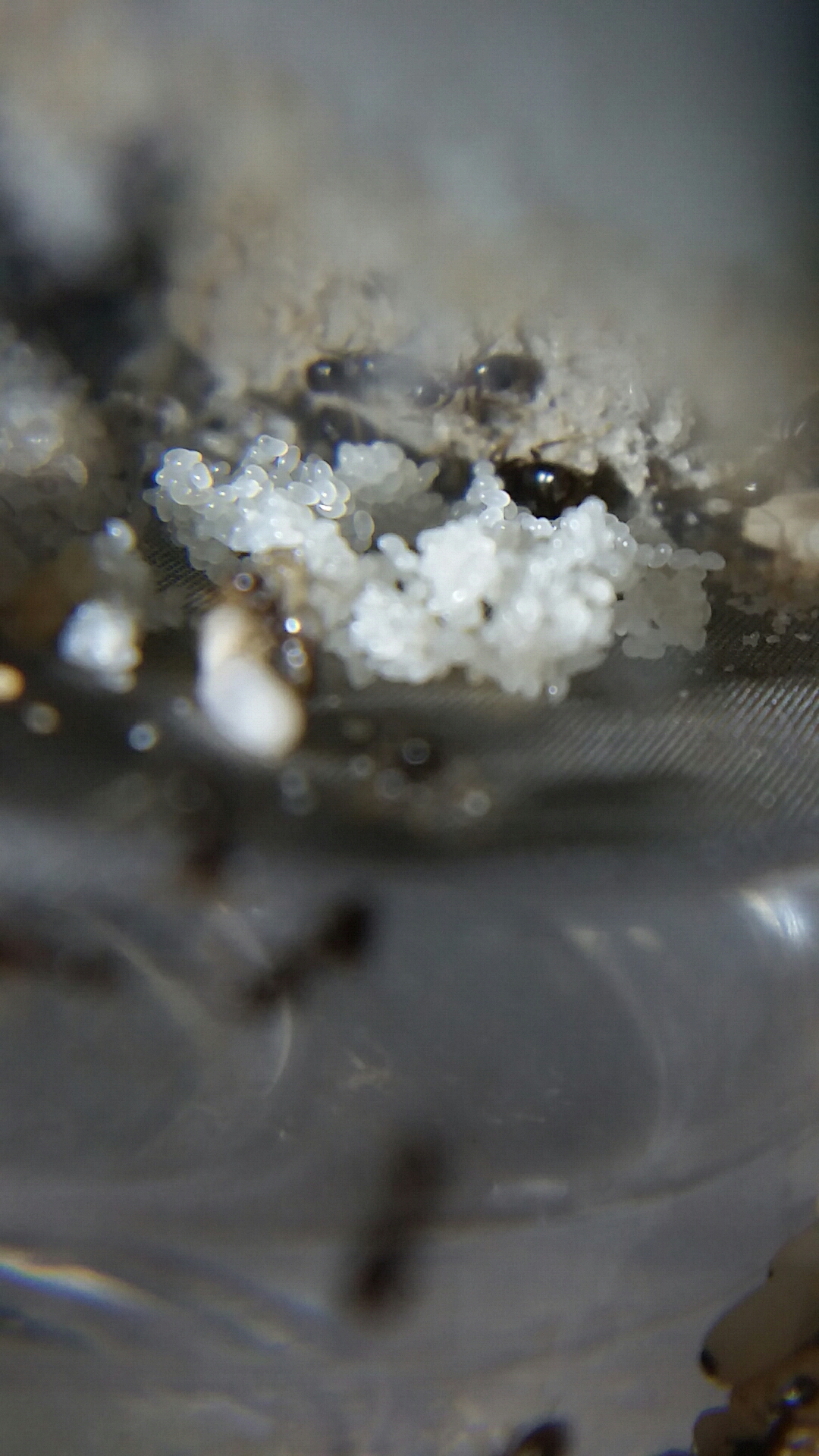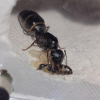All colonies are out, and doing well!
Colony A(I forgot which numbers went in first  ): 15 workers, 10 brood. Least active of all the colonies; test tube.
): 15 workers, 10 brood. Least active of all the colonies; test tube.
Colony B(old colony 1): 20 workers, 10 brood, test tube.
Colony C: 20 workers, 20 brood(15 larvae, 5 eggs); this colony is in a petri dish style formicarium, using this old makeup container thing that my grandma insisted I take to use for projects. Well at least it has come in handy.
Lone Queen: 10 eggs, in a hydrostone formicarium inside the 2x2x0.5" amac box.
Last but not least....
The Trio: 80 workers or so, give or take a few, over 100 larvae, and no eggs yet. The queens are getting fatter, so hopefully eggs are to come. I really love how in this species the workers rarely eat any proteins themselves, but instead just tear the food apart(flies and termites are their favorites) and place it on the larvae piles, and allow the larvae to eat for them, and then receive the liquids the larvae produce. A rather poor quality video coming out on this colony later today(was not filmed with a macro lens).
Hi there! I went on a 6 month or so hiatus, in part due, and in part cause of the death of my colonies.
However, I went back to the Sierras, and restarted my collection, which is now as follows:
Aphaenogaster uinta, Camponotus vicinus, Camponotus modoc, Formica cf. aserva, Formica cf. micropthalma, Formica cf. manni, Formica subpolita, Formica cf. subaenescens, Lasius americanus, Manica invidia, Pogonomyrmex salinus, Pogonomyrmex sp. 1, Solenopsis validiuscula, & Solenopsis sp. 3 (new Sierra variant).





